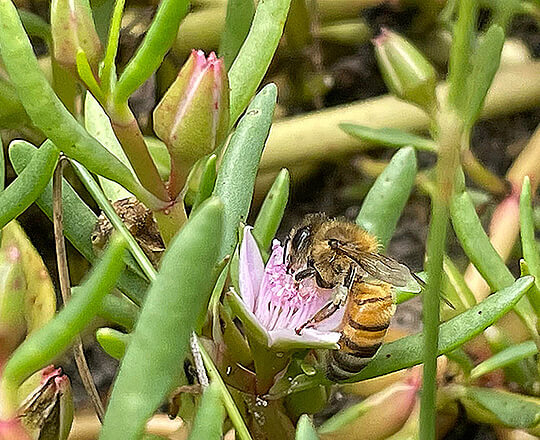Honey, the golden nectar of nature, has been cherished for its sweetness and versatility for centuries. However, if you've ever noticed your honey transforming from a smooth, liquid gold into a grainy, sugary texture, don't fret. What you're witnessing is the completely natural process of honey crystallisation, and it's not only fine to eat but also a testament to honey's purity and quality.

The Beauty of Natural Transformation
Honey crystallisation is a completely natural phenomenon that occurs over time. It's the result of the sugars in honey binding together to form tiny crystals. This process is often seen as honey's way of preserving itself.
Water Content and Honey
One of the key factors influencing crystallisation is the water content of honey. Honey with lower water content is more likely to crystallise because there is less moisture to keep the sugars fully dissolved. This is a good thing because lower water content means honey is less likely to ferment.

Role of Temperature
Temperature also plays a role in crystallisation. Cooler temperatures encourage the formation of crystals in honey. If you store your honey in a cool environment, like a pantry, it's more likely to crystallise over time.
Types of Honey and Crystallisation
Not all honey crystallises at the same rate. Some types of honey are more prone to crystallisation due to their composition. Clover honey, for instance, is known for crystallising relatively quickly.

Time of Influence
Honey can crystallise over time, especially if it's stored for an extended period. This is a sign that your honey is pure and hasn't been overly processed.
The Intriguing Honey Composition
Honey is made up of a mixture of sugars, including glucose and fructose. The ratio of these sugars varies from one honey variety to another. A higher glucose content promotes crystallisation.

Stirring and Agitation
Stirring or agitating honey can introduce air into the mixture and encourage crystallisation. This is why it's essential to use a clean, dry spoon when scooping honey from the jar.
The Role of Microcrystals
Sometimes tiny, undetectable crystals are already present in the honey. These act as nuclei around which the crystallisation process can start.

Impurities and Pollen
Tiny particles, such as pollen or impurities, can also serve as starting points for crystallisation to occur.
Exposure to Air
Leaving the honey container open or not sealing it tightly can expose honey to air, facilitating the crystallisation process.
Crystallised Honey: A Sign of Purity and Quality
So, what should you do if you find your honey has crystallised? The answer is simple: embrace it! Crystallised honey is a sign that your honey is pure and has not undergone excessive processing. It's perfectly fine to eat, and in fact, some people prefer its spreadable, creamy texture.
How to Decrystallise Honey
If you prefer your honey in its liquid form, you can easily decrystallise it. Simply place the jar of crystallised honey in a bowl of warm water or microwave it gently in short bursts, stirring between each burst until it returns to a liquid state. Avoid overheating, as excessive heat can destroy some of honey's natural enzymes and flavour.
In conclusion, crystallised honey is not a cause for concern but rather a testament to the purity and quality of this natural sweetener. So, the next time you encounter grainy honey in your pantry, remember that you're witnessing a natural process that preserves honey's goodness. Embrace the transformation, savour the flavour, and enjoy the versatility of crystallised honey in your culinary creations.

